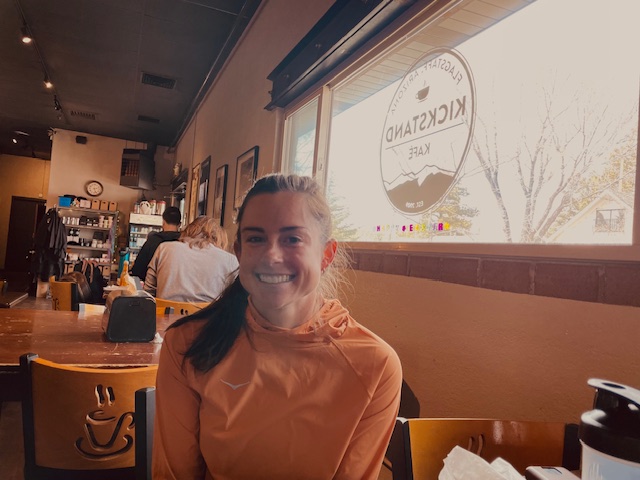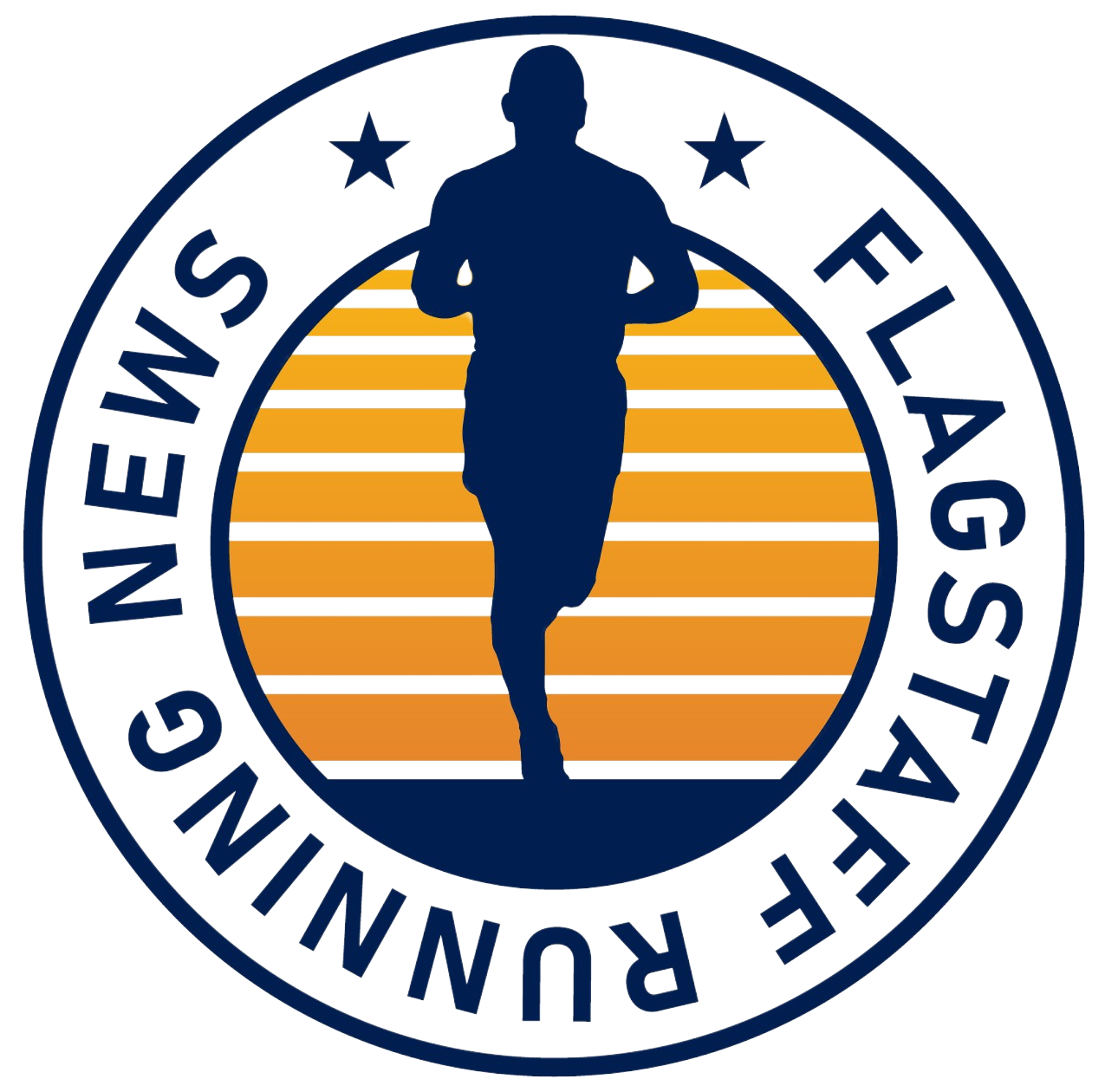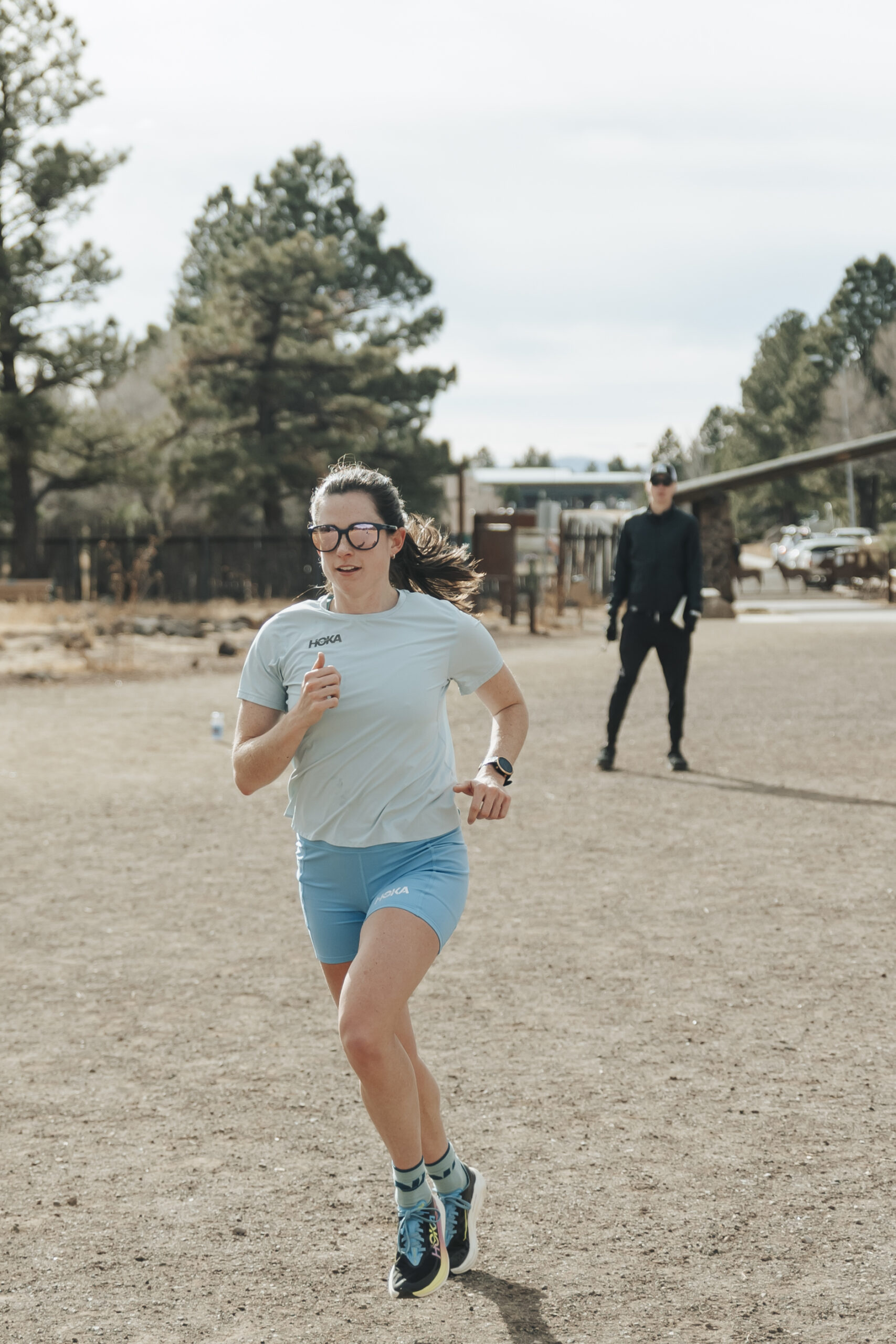She’s proud to be on Team USA for World Cross, but is gearing for June’s Trials and an Olympic team 5,000 spot
Truth be told, for a few weeks there, Abby Nichols wasn’t feeling overly satisfied with her performance in January at the U.S. Cross Country Championships.
Sure, she finished sixth. Sure, that was good enough to squeeze into the final spot on the U.S. team at this Saturday’s World Athletics Cross Country Championships in Belgrade, Serbia. Sure, making her first international team was special, and all, but the Hoka NAZ Elite runner is a tough self-critic, and she felt she could have done better.
Then, the kit arrived.
Something about seeing the singlet with USA emblazoned across the front changed Nichols’ perspective.
“It’s pretty surreal,” said Nichols, one of four Flagstaff-based runners competing at World Cross (along with Dark Sky’s Weini Kelati and Kasey Knevelbaard and NAZ Elite’s Ahmed Muhumed). “When we got all the gear a few weeks ago, it kind of gave me a chill.
“I feel like I wasn’t that happy with how I raced at US cross, but I checked the box, you know. When I finally got the gear, I was better with it. I thought, ‘OK, well, maybe I did you OK in that race.’ It’s exciting.”
Perhaps Nichols wasn’t impressed by qualifying for World Cross because she attempted the qualifying race after a layoff, and she admitted she didn’t feel sharp. Or maybe it’s because Nichols is focusing more on her upcoming outdoor season, in which she will try to crack the U.S. tough 5,000 field and make the Olympics.
Whatever the case, Nichols is motivated to make a much better effort Saturday on a mostly flat course in Belgrade. No U.S. women is favored to reach the podium, though Weini Kelati is running well and has a chance. Kenya has a quartet of racers, including defending champ Beatrice Chebet.
The realistic goal for Nichols?
“I know my teammates have been top 25 in the past, so my goal is to do that,” she said. “Also, I just want to focus on a good race, my own race. I’m in a way better spot than I was for the US cross.
“I’ll be more competitive. I kind of just took a break (before the January U.S. cross race). and got way out shape. It took longer for feel more like myself. Which is fine; my body always needs a good reset. I’m finally feeling normal.”
Normal, for the 27-year-old Nichols, is pretty darn fast.
She always has done well in cross country, especially as a graduate transfer at the University of Colorado (previously: Ohio State) in 2021. That cross country season, Nichols won the Pre Nationals meet, later won the PAC-12 Conference title, placed third in the Mountain Regionals and eighth in the NCAA Finals.
Interestingly, Nichols never saw herself as either a cross-country (NCAA women run 6K) or a 5K specialist. Coming out of high school in Ohio, she harbored ambitions of being a 1,500-meter and miler. Her coaches, both at Ohio State and Colorado, and even now at NAZ Elite, saw it differently – steering her toward the 5,000.
“I just want to focus on a good race, my own race. I’m in a way better spot than I was for the U.S. cross.”
Abby Nichols on Saturday’s World Athletics Cross Country Championships
That’s not to say that Nichols doesn’t like cross country. She does. It’s just that now, for professionals, cross country is seen as a diversion from road and track racing.
“(Cross country) has a different vibe to it that I really like,” Nichols said. “The races are in the morning, and everybody’s on the line together. You can kind of have a team with you. There are no real splits you have to worry about, you just hang with the pack and go for it…. I’m probably going to be keying off the rest of the Americans because I know their times and everything. I’m sure Weini will go out (fast); she’s on a different level right now.”
It’s doubtful any runner at World cross has been doing race-specific, cross-country training the past couple of months. After all, this spring and summer, most will be gearing up for an Olympic bid.
Nichols is no exception.

NAZ Elite Coach Jack Mullaney confirmed that Nichols definitely will run the 5K in June’s Olympic Trials in Eugene, Ore. There also is a chance Nichols might contest the 1,500 meters, but there are qualifying rounds for both the 5,000 and 1,500, so that might prove too taxing. The 10K at the Trials? Doubtful.
Nichols seems committed to the 5K, which is why she took most of the indoor season off (except running the 3,000 at February’s Millrose Games) for base-building.
“I’ve been training on the track a lot so it’ll be good for what I’ve been training,” she said. “I’ve been doing more 5K workouts, a lot of speed. My VO2 max workouts have been more 5K geared, too. I thought doing more strength work and getting a good base in will help me more in the summer. That was my mindset. I want a huge base to have a big outdoor.
“I think a lot of crazy things can happen (in a 5K race) outdoor. I wouldn’t be surprised if I showed up and be a lot more competitive than last year. I know I’m in a better spot. My training’s been more on a professional level, doing a lot more mileage — the last five weeks, 80-85 (miles). Last year, around 70. I’ve been completely healthy and consistent with it.”
It will be a tall order to crack the U.S. women’s 5K team, what with the likes of Alicia Monson, Elise Cranny, Kelati, Elly Henes, Josette Andrews and Natasha Rogers in the mix. But Nichols is right there, too. Her 5,000 PR is 15:09, but Nichols believes she has yet to tap her potential in the event.
The Olympic standard for the 5,000 is 14:52; the Olympic Trials standard 15:20. She will be aiming at achieving the Olympic standard this May at the USATF Grand Prix in Los Angeles. In last year’s U.S. Championships, in Eugene, Nichols placed 10 in 15:27.
Is she capable of the sub-15 feat?
“Yeah, I do think so,” she said. “Last year, I was in shape to break 15, but the stars never aligned. Or maybe that’s just what I’m telling myself. I think it can happen, for sure. I’m better when I’m focusing on racing and not time. All these time trial races are not fun to me. You get on the train and have to hang on. Racing will be my mindset this spring.”
What might boost Nichols is her closing speed. She still maintains that miler’s speed, even though it no longer is her primary focus. Last year, Nichols won both the Sir Walter Raleigh Mile in North Carolina and the Hoka Festival of Miles in St. Louis, and she’s known to have a finishing kick.
“In high school, I thought I’d be in the 1,500 (in college),” she said. “I always had speed. But in college, I quickly got pushed into the 5K. At Colorado, we had so many milers and I was doing so well in the 5k it made sense. Alan was one of the first coaches who told me I could be good at the 15. He wanted me to do all those races last year. Now, we’re still talking about it. My top speed isn’t as fast, but I have strength and can close hard. I showed that last year.”
“Alan” is former NAZ Elite Coach Alan Culpepper, who coached the team for about a year before a falling out led to his departure. (Speculation is that Culpepper did not want to move to Flagstaff from his Boulder home to run the NAZ Elite squad.)
Nichols admits she was disappointed when Culpepper left. She even briefly considered leaving NAZ Elite to return to Boulder to train. But she now says she’s in the much better headspace and is happy at NAZ Elite.
“A big reason I joined the team was because I really liked Alan,” Nichols said. “I felt like he knew where I was coming from, and he was so smart with all the science and everything. … I just wanted a coach who knew what they were doing and not just throwing eggs at the wall and saw what worked.”
Mullaney’s ascension to the job convinced Nichols to stick it out, however.
“I knew Jack also knew all that sciencey stuff,” she added. “When they brought him in for the interview, I was like, ‘I think this is our guy.’ I was really excited to be under him, but there still was a transition period where I had to let go of Alan. He was the coach I always wanted. It’s still hard for me.”
Did she seriously consider leaving NAZ and Flagstaff?
“Yeah, for sure,” she said. “For awhile. I love Boulder. Also, 5,000 feet was a lot easier on my body. I hadn’t adjusted completely here (to 7,000 feet), but it’s a lot better now. There was definitely those thoughts, but the bigger thing for me is having a team and NAZ and Hoka behind me, and that trumped everything. It hasn’t really shown yet, but I think it’s working. Jack and I are working well together.”
Nichols is in the unusual position of having lived and trained at two of America’s running Meccas – Boulder and Flagstaff. She said there are pros and cons to each city. Boulder, she said, is bigger and closer to major cities (Denver), whereas Flagstaff has more diverse trails.
“Flag’s vibe is more rustic, feels more mountainy,” she said. “I heard Boulder used to be more like that. Now, it’s just changed a lot. … You can access more tree shade here, and the urban trail system here is better. A like running in Flagstaff better, except it’s higher (elevation). Although, I do miss the Bobolink Trail (in Boulder).”
One other thing Nichols misses.
“We really need a Trader Joe’s here,” she said, smiling.



Leave a Reply